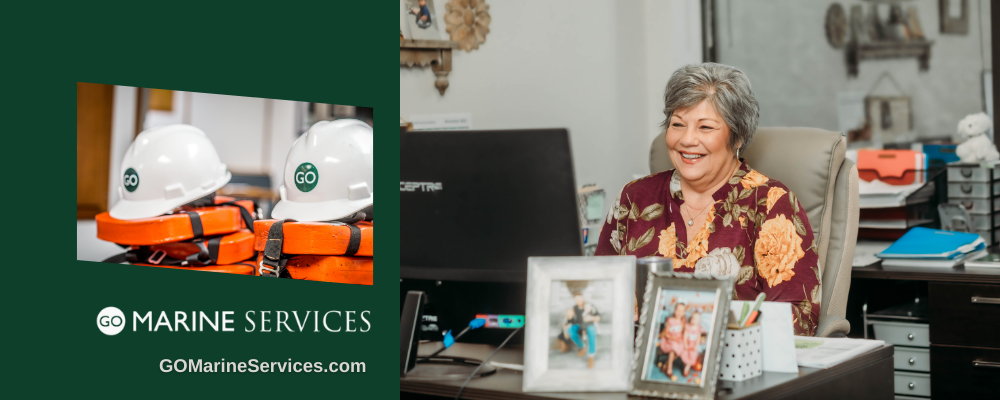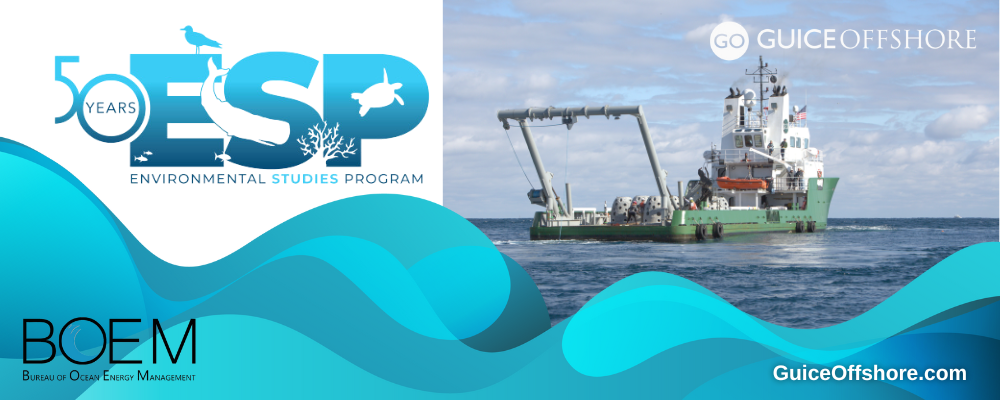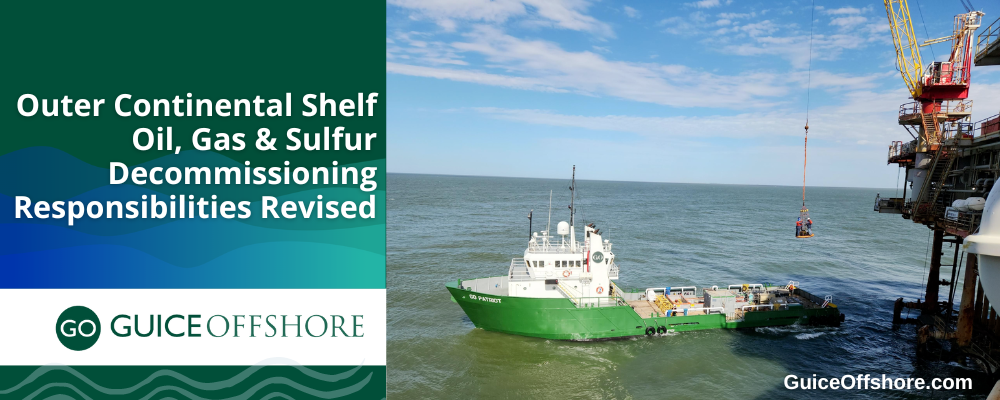During late May 2023, the U.S. Bureau of Safety and Environmental Enforcement (BSEE) announced the successful completion of two Gulf of America equipment deployment drills to evaluate the oil and gas industry’s preparedness to respond to a subsea blowout. Each of the drills lasted between three and five days and were mobilized by Beacon Offshore Energy (BOE) and Chevron, along with their mutual aid partners to deploy, and install equipment to cap a blowout in deep water off the coast of Louisiana.
- BSEE initiated BOE’s drill on Sunday, May 7, at 7 a.m., and concluded it Wednesday, May 10, at 10:40 p.m.
- Chevron’s drill was initiated on Friday, May 19, at 7 a.m., and concluded Tuesday, May 23 at 8:45 p.m.
During the two unannounced drills, BSEE required BOE and Chevron each to deploy a capping stack from their respective storage locations near Houston and Corpus Christi, Texas, to separate areas in the Gulf of America, ranging from approximately 70 to 140 miles from shore. Once on-site, each operator lowered a capping stack onto a simulated well head on the ocean floor in about 6,000 feet of water, connected the capping stack to the wellhead, and pressurized the system to 12,500 pounds per square inch to simulate well pressure.
“We are committed to ensuring the offshore oil and gas industry maintains the highest level of preparedness,” said BSEE Director Kevin M. Sligh Sr. “The initial results from these drills were successful, and we will evaluate lessons learned as we continually work to enhance safety in offshore operations.”
BSEE conducts regular, thorough inspections of source control equipment and observes required pressure tests annually. Unannounced deployment drills, such as the ones conducted this month, provide assurances that the equipment will perform as required while providing important training opportunities for offshore personnel.
A capping stack is a critical piece of source control equipment designed to shut off any oil flow from a well if other systems fail, such as the blowout preventer. Since the initial drill in 2012, experienced personnel in both industry and government sectors have turned over. Also, the consortiums that provided contract access to the well containment systems have expanded their equipment inventories and updated internal procedures. As a result, in December 2022, Sligh directed the bureau to initiate two drills in 2023 to verify the industry’s readiness to deploy these assets quickly.
“The time was right to initiate these drills,” said Sligh. “We have provided a new generation of responders with the valuable experience and training to ensure they are prepared and ready, if needed.”
BSEE engineers, inspectors, and preparedness analysts were onsite throughout the two separate multi-day drills, monitoring industry inspections and tests before the capping stacks journeyed offshore. While aboard the transit vessels, they evaluated the procedures firsthand as operators lowered the capping stacks to the seabed.
While initial observations indicate the drills met BSEE requirements for deploying source control equipment, the BSEE said it will evaluate all aspects and results of the drills and make recommendations in a formal report later this year.
“Drills of this magnitude are proof our collaboration and vigilance is a shared commitment throughout government and industry,” said Gulf of America Region Director Bryan Domangue. “The hands-on experience we have all gained cannot be understated. To physically deploy assets of this scale provides an unmatched understanding of the importance of readiness.”
“This is a remarkable achievement and a milestone for containment response,” said BSEE Oil Spill Preparedness Division Chief Eric Miller. “These types of drills reinforce government and industry efforts and capabilities to address and control oil flow from a damaged subsea well.”
Through its Oil Spill Preparedness Program, the BSEE minimizes the impact of offshore facility oil spills by ensuring energy producers are trained, resourced, and response ready.
- 30 CFR Part 254 – Oil Spill Response Requirements for Facilities Located Seaward of the Coastline
- 40 CFR Part 300 – National Oil and Hazardous Substances Pollution Contingency Plan
BSEE Oil Spill Preparedness Program
BSEE administers a robust Oil Spill Preparedness Program through its Oil Spill Preparedness Division (OSPD) to ensure owners and operators of offshore facilities are ready to mitigate substantial threats of and to respond to actual oil spills that may result from their activities.
The Program draws its mandate and purpose from the Federal Water Pollution Control Act of October 18, 1972, as amended, and the Oil Pollution Act of 1990 (October 18, 1991). It is framed by the regulations in 30 CFR Part 254 – Oil Spill Response Requirements for Facilities Located Seaward of the Coastline, and 40 CFR Part 300 – National Oil and Hazardous Substances Pollution Contingency Plan.
Acknowledging these authorities and their associated responsibilities, BSEE established the program with three primary and interdependent roles. Through these roles, the Bureau performs numerous functions for improving the nation’s spill preparedness and response capabilities, including, comprehensive contingency planning, equipment testing and inspection, quality training, unannounced exercises, research and development (R&D) endeavors, and close engagement with the stakeholders of theNational Response System (NRS).
Click below to learn more about each aspect of the Program:
- Preparedness Verification
- Oil Spill Response Research
- Ohmsett
- Coastal Zone Area Contingency Planning
- Response System Planning Calculators
- Oil Spill Response Support
For more information about post-Deepwater Horizon reforms, visit the BSEE Regulatory Reforms page.
Contingency Planning, Exercise, and Incident Management Tools
- Worst Case Discharge Scenarios for Oil and Gas Offshore Facilities and Oil Spill Response Equipment Capabilities – BSEE contracted studies that review worst case discharge scenarios and their issues for contingency planning purposes.
- E-Permits OSRP Component – BSEE’s software program where plan holders can electronically submit their Oil Spill Response Plans to OSPD.
- 2016.1 Preparedness for Response Exercise Program (PREP) Guidelines – updated and published in the Federal Register (10/2/2018)
Make Guice Offshore Vessels Part of Your Offshore Oil and Gas Preparedness Toolbox
Guice Offshore’s mini supply vessel fleet is a trusted partner in offshore oil and gas operations. Our support vessels play a necessary and critical role in the offshore exploration and production (E&P) environment and are utilized in almost every phase of the extraction process from survey and drilling, to production and abandonment.
Guice Offshore (GO) maintains a strong presence in the northern Gulf of America E&P sector. our vessels are most often employed in support of Platform and Pipeline Operations (production activities, logistics, diving, ROV, inspection, maintenance, repair, plug and abandonment). We also participate in certain early phases of operations like surveying.
Geotechnical and Geologic Ocean Seabed Surveys
Utilizing vessels like Guice Offshore’s 150 ft. DP1 GO Liberty or the 170 ft DP1 GO Discovery, geotechnical companies can perform detailed survey activities for their oil and gas industry clients, such as seabed mapping, soil investigations and core sampling.
Depending on their equipment installed, Guice Offshore vessels can work in a variety of coastal or offshore environments and water depths. Open cargo decks, ample accommodations, excellent maneuverability and station-keeping, all coupled with an efficient cost of operations, makes the GO fleet a consistently reliable choice for the offshore oil and gas industry.
Oil Rig Inspection, Maintenance and Repair (IMR)
GO vessels facilitate the inspection, maintenance and/or repair of offshore pipelines, subsea structures, floating and fixed platforms and drilling rigs in a range of water depths. Our IMR support activities extend well beyond traditional oil and gas roles, and can include any number of industries such as offshore wind turbines, power cables, subsea or surface commissioning of structures, and sustainable energy equipment.
Often, IMR activities are conducted with Remotely Operated Vehicles (“ROVs”). Our GO Fleet possesses the accommodations, dynamic positioning (DP) station-keeping technology and removable side cargo rails necessary to support these operations.



